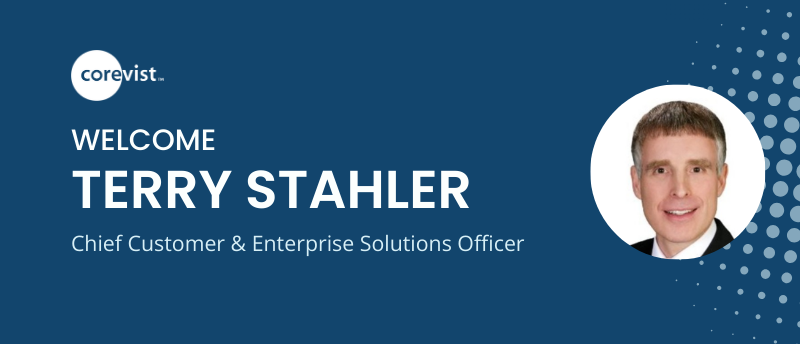Share
Author
George Anderson
Share
SAP eCommerce without IT headaches
Let’s face it. If you work in IT at an SAP manufacturer, you may lose sleep when you hear the words “SAP eCommerce integration.” Getting two (or more) technology platforms to play nice together is no easy feat—especially when you need accurate data in both places, you don’t want to migrate that data manually, AND you have millions of dollars in revenue at stake.
The good news is, an SAP eCommerce integration doesn’t have to wreck your life. If it’s done right, it will relieve stress and even reduce the workload on IT. In fact, ⅓ of our clients have no IT resources dedicated to supporting our application. That’s right–no dedicated resources.
At Corevist, we build this kind of integration for every client we take on. Here’s how we do it.
We’re SAP-certified.

We’re certified on SAP NetWeaver. That means you won’t have to worry about the integrity of your SAP system after you expose it to the Corevist app via web services. Querying SAP for real-time data, and posting orders directly to SAP in real time, all occur with no interruption to your regular SAP use.
No more headaches from spaghettiware eCommerce solutions.
But how is our solution different? Glad you asked!
Real SAP data fed to eCommerce—in real time
The Corevist solution takes real SAP data and displays it in the eCommerce catalog. That means inventory, pricing, credit limits, and more display accurately.
In other words, a Corevist eCommerce store is integrated with every SAP transaction form day 1. Because of that, the store is resilient to change—and change is inevitable down the road due to changes in valid products, product related rules, account permissions, and more. All of that will manifest in the real world on a regular basis. For all of those organizations that need to stop, analyze, and recreate all of those rules on 2 different platforms, they’ll be challenged heavily because they can’t integrate to those transactions on day 1 the way we do.
How do we do it?

We don’t yell as loud as Steve Ballmer, but yes, it’s all in the architecture. It’s our design thinking, the way we assemble the building blocks of the solution, that makes us resilient to change. Sure, we can implement fast—and we do, in 90 days. But that’s not even the main benefit. The main benefit is, because we can implement fast, we can also change fast. Companies that take a while to implement SAP eCommerce solutions are NOT resilient to change. They have to reapply the same methodology of the initial integration every time there’s a change.
Yikes.
(Fast implementation) + (lean, powerful architecture) = 0 impact on IT
Because we implement fast and are resilient to change, our impact on IT resources is nominal. We’ll prove it to you. On day 1, when we implement the solution, you can make a change to SAP master data—change pricing, change a product rule, change a credit limit on an account, change the availability of a product in the sales area, implement new order types—and you’ll see that change reflected immediately in your eCommerce store.
You make the change once (in SAP), and it appears in two places at once (SAP and the eCommerce store). That’s right—our solution requires zero IT support for the website. Remember how ⅓ of our clients have no IT resources dedicated to supporting our platform? It’s all because of our architecture.
Who else can say that?
The Takeaway
SAP eCommerce doesn’t have to make you pull your hair out. When it’s done right, everyone in the organization (as well as your customers) will find it makes their lives easier, not harder. That’s how it should be! So what are you waiting for? If you’re considering moving some or all of your revenue online, get in touch today. I want to hear your pain points and the unique things that make your business tick. Let’s talk SAP.







